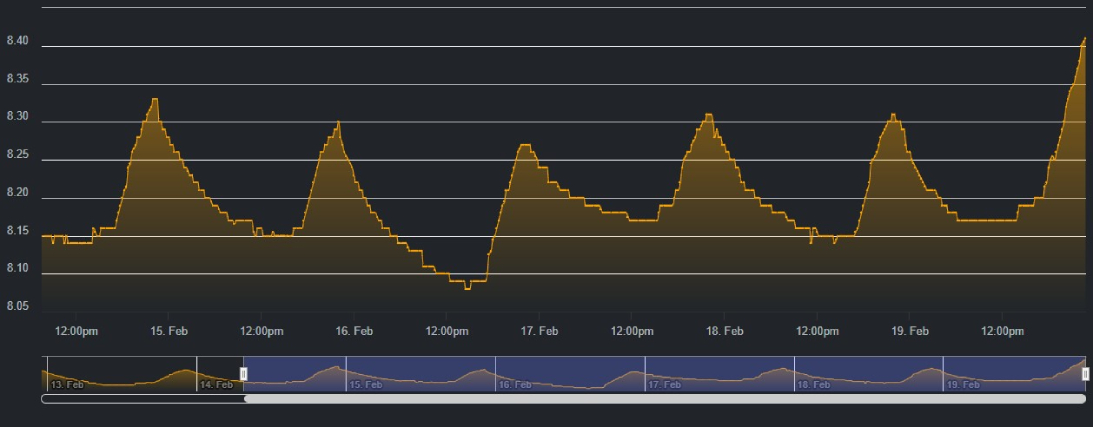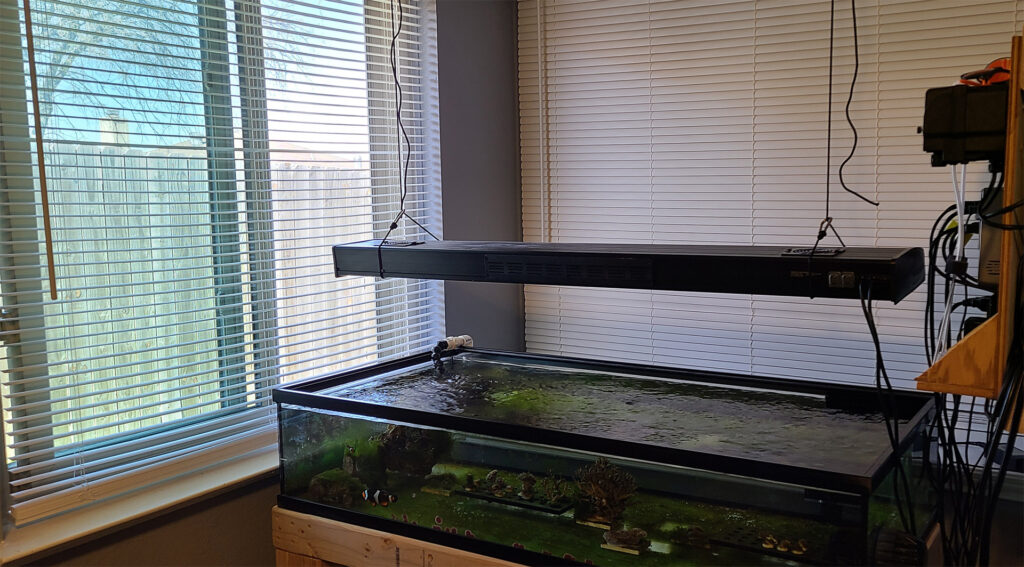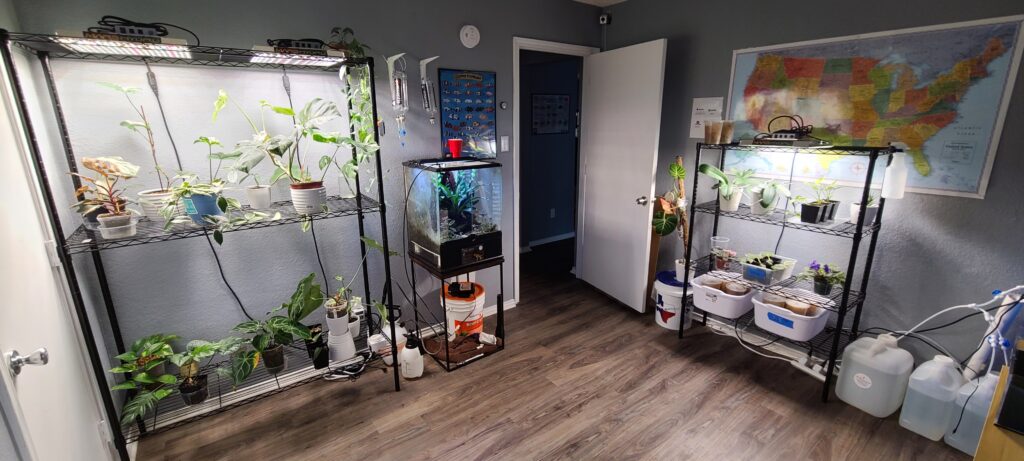5 easy ways to raise pH in a Reef Tank
Table of Contents
To raise pH in your aquarium is not a difficult task at all, you just need to know the methods available to boost it up. It can even be as simple as opening a window. It’s still very common today for a reef tank to have low pH because pH was once thought to not really matter much. With any of these simple methods you can raise your pH from 7.8 to 8.3 or even higher in less than 24 hours.
What is pH in a reef tank?
pH stands for “potential hydrogen” and refers to the acidity or basicity in water chemistry. A pH of 7 is considered neutral while anything above 7 is basic and anything below 7 is acidic. pH aids in coral growth. Normal pH ranges do not really affect fish as much as it does corals.
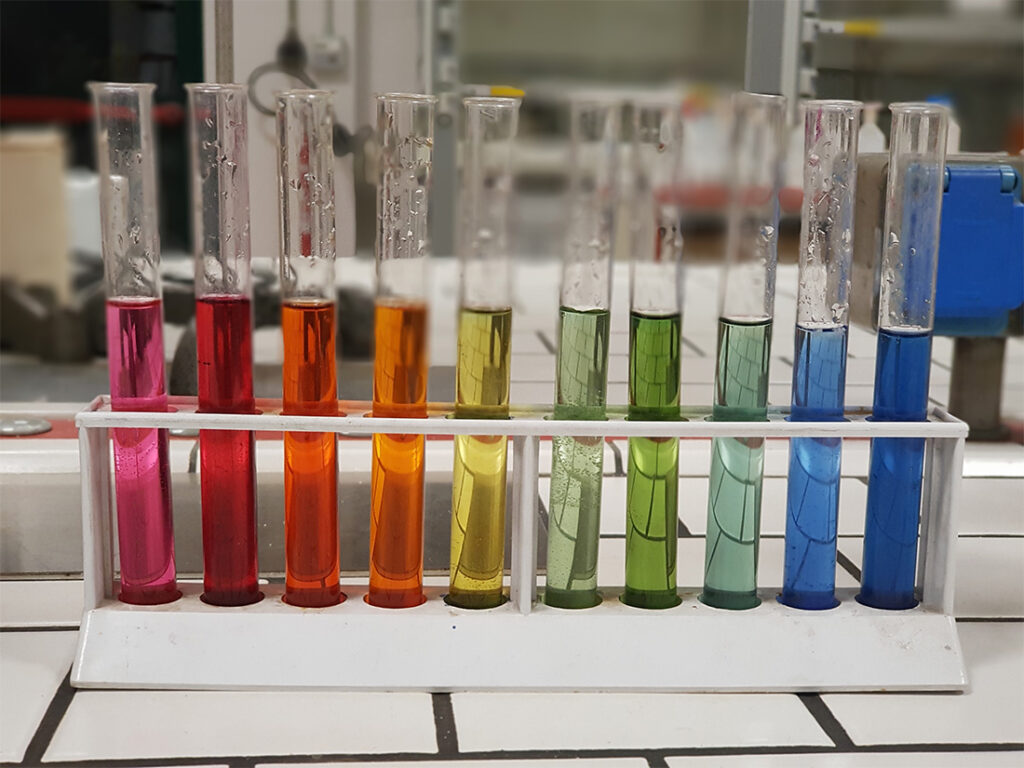
Best pH level for a reef tank
The best pH of a saltwater aquarium is anywhere from 7.80 to 8.5. This is a big gap so we will break it down further. If you do not have any corals a lower pH of 7.8 is perfectly fine. If you have or plan to have corals the best pH for a reef tank is 8.0 – 8.5. The sweet spot for many reefers is between 8.2 – 8.4.
What causes low ph
High levels of co2 or carbon dioxide in the water of your aquarium will lower pH. People and Pets breathe out co2 which will contribute to the low pH of your aquarium. If you have a big family, live in a small house, have a party with a lot of people, the co2 levels will drastically increase causing your pH levels to drop.
Lower alkalinity or having a lot of fish breathing out co2 in your reef tank will also cause pH to be low. Low pH for a short amount of time is not the end of the world. Actually it is normal and totally natural for pH to dip at night while your tank’s lights are off due to corals not photosynthesizing.
How to raise pH in a reef tank
There are five easy ways to raise ph in a reef tank. Some methods are easily accomplished with little effort, some methods are free while some will cost a little money to achieve. Whichever way you choose to raise ph is a step in the right direction to grow your corals faster.
#1. Open your windows to raise pH
You can simply open your windows to let fresh air in from outside and let the co2 that’s built up in your house escape. I’ve done this with a window that’s right next to my frag tank and I watched the pH jump from 8.10 to 8.30 in a matter of a few hours. Obviously you do not want to open your windows if it is too hot or too cold so during the spring or fall is a perfect time to take advantage of this.
#2. Use Kalkwasser to raise pH
Kalkwasser is Calcium Hydroxide Ca(OH)2. It comes in a powder form which you mix in RODI water to create a Kalkwasser solution. Kalkwasser is a one-part solution that is used to maintain alkalinity and calcium levels in your reef tank. One huge benefit is Kalkwasser has a max pH saturation of around 12.4. As you dose Kalk to your reef tank, the pH will increase. You do not want to randomly add Kalkwasser to your reef tank solely to raise pH. You want to only use it when your alkalinity and calcium levels drop slightly and your tank needs it.
Warning: Calcium Hydroxide is very caustic and may burn your skin. Do not breathe it in or touch it. Use the proper safety equipment while handling it. Use Calcium Hydroxide at your own risk.
#3. Use a two-part solution to raise pH
Sodium Carbonate Na 2CO 3 is a powder that when mixed with RODI water is used to maintain or increase the alkalinity level of a saltwater aquarium. It is one part of a two-part system. Sodium Carbonate will also raise pH just like Kalkwasser does when you dose it.
The second part in this two-part mix is Calcium Chloride CaCl2. Calcium Chloride increases or maintains the calcium level of a saltwater aquarium. It does not raise pH.
There is actually a third part to every two-part solution which is Magnesium. Magnesium is used to maintain or raise your magnesium level.
When any two-part method is mentioned it is actually referring to the three main elements of a reef tank; Alkalinity, Calcium and Magnesium. Each part must be kept separate and dosed at separate times or it will precipitate out in your aquarium and become useless.
#4. Protein Skimmer and Protein Skimmer accessories
A protein skimmer is a simple way to raise ph in a saltwater aquarium. However, depending on the time of day a protein skimmer can also lower your reef tank’s pH.
Run an airline from outside to your protein skimmer to raise pH
You can run a 3/8” airline from your skimmers silencer or venturi to the outside of your house where the oxygen levels are higher. This will pull in fresh air into your skimmer and will help with lowering the co2 in your aquarium causing your pH to rise. Most people just run a hose out of their window but some will drill a hole into their wall and put a screen filter on the outside so bugs and pollution can’t get in.
Co2 Scrubber
A co2 scrubber is a device that is made up of co2 absorbent media and a reactor and cartridge. One side of the cartridge has tubing that connects to your protein skimmers silencer or venturi. The co2 media absorbs the co2 from the water in your aquarium. The co2 media is made from Calcium Hydroxide Ca(OH)2 and Sodium Hydroxide NaOH in a pelletized form.
As your skimmer runs the co2 media will pull out the co2 and raise your pH. One down side is the media does not last a long time before it no longer works. You will have to replace it about every 10-14 days depending on how much c02 is in your house.
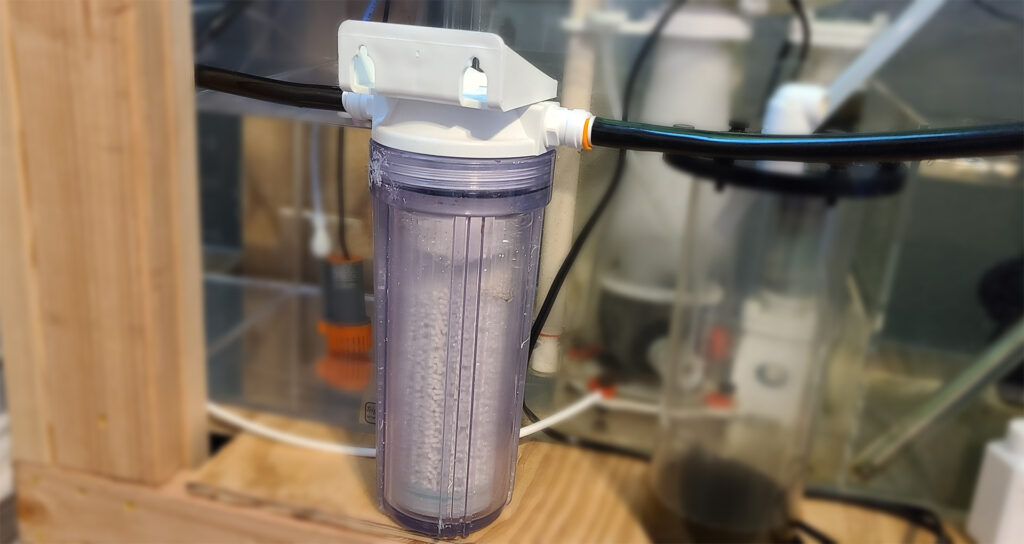
Recirculating Co2 Scrubber
The concept behind a recirculating co2 scrubber is the same as a normal co2 scrubber except you are using the co2 media more efficiently. A recirculating co2 scrubber is made of co2 media, a reactor and cartridge with two output hoses. One hose connects to a special adaptor for your skimmer lid like these 3d printed recirculating co2 scrubber attachments by Fish of Hex, and the other hose connects to your protein skimmers silencer or venturi. This recirculates the co2 media and allows it to last longer.
#5. Use a refugium with macroalgae to raise pH
The typical pH chart is high while the lights are on and low while your lights are off. This is due to the photosynthesis of the corals. To help close the gap and raise your pH at night you can run a refugium with chaetomorpha or any other macro algae on an opposite lighting schedule of your display tank. The macro algae will photosynthesize and help lower the co2 causing your pH to rise.
Make sure to use a powerful light to see the full benefits growing macroalgae in a refugium can provide. Some of the best lights on the market today are the following:
- Ecotech Radion Freshwater XR15 or XR30
- Neptune GRO Refugium light
- AI Blade Refugium light
- Kessil A360X Refugium light
- Tunze Waterproof Full Spectrum LED
#6. (Bonus) Put plants near your aquarium
It’s no secret that plants absorb co2 and give us oxygen. We learn that in elementary school. If you have a plants, or a plant addiction like me, put them near your aquarium to have them help absorb the co2. I currently have about 50 tropical plants in my fish room where my frag tank is. Its not the most efficient way of raising pH but if you have a lot of plants it can help.
#7. (Bonus) Add more powerheads
If the water surface of your reef tank has an “oil slick” on it you need to add more powerheads facing towards the surface. This will aid in oxygen exchange and help to reduce the co2 and increase the oxygen in your aquarium. This can also help raise your pH.
Using multiple methods to raise pH
You can use a combination of several of these methods to help raise your pH. The most common combination people use is to run their protein skimmer with a recirculating co2 scrubber, dosing Kalkwasser at night and running a refugium with macroalgae.
What is the benefit of raising pH
The main benefit of raising the pH in a reef tank is the corals will grow much faster and healthier.
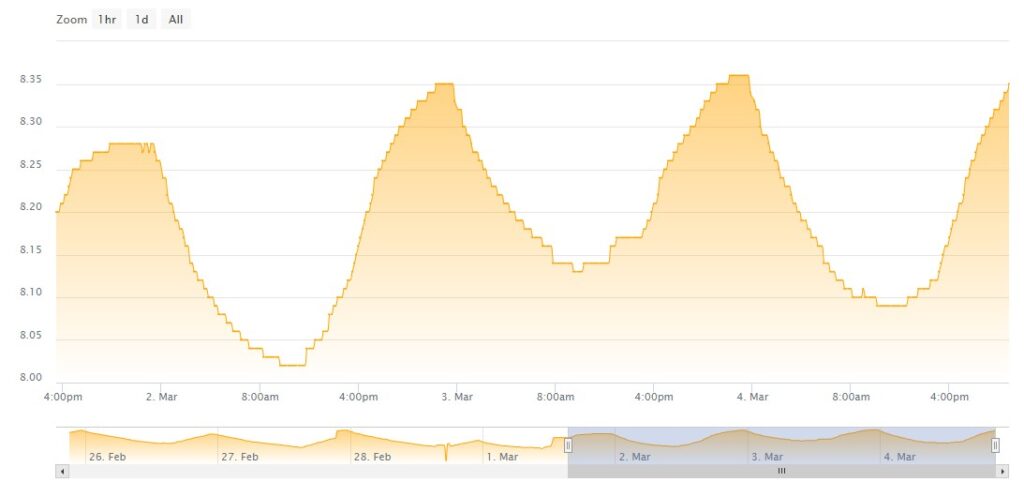
Best way to monitor pH
The best way to monitor pH is by using an Aquarium Controller that has a charting feature such as the Neptune Apex.
Why does pH go up and down
pH is higher while your aquarium’s lights are on because your corals photosynthesize and produce oxygen. When lights are off they do not photosynthesize therefore co2 is higher and pH is lower.
Can pH be too high/low
pH lower than 7 can make corals very unhappy and even kill them. pH in a Calcium reactor is typically in the high 6’s and this melts coral skeleton. pH on the higher side is really not an issue as it’s not likely to reach much higher than 8.5 unless something like Kalkwasser is added in abundance by mistake. More common levels are around 8.2 – 8.3 and that is about as high as a reef tank tends to get even if we use all of the methods available to us to increase pH.
Final Thoughts on pH
pH used to be one of the parameters in a reef tank everyone believed didn’t really matter too much. In recent years that has been further from the truth. Raising your pH will grow corals faster. There’s several ways you can go about raising pH. You really can’t overdo it.


